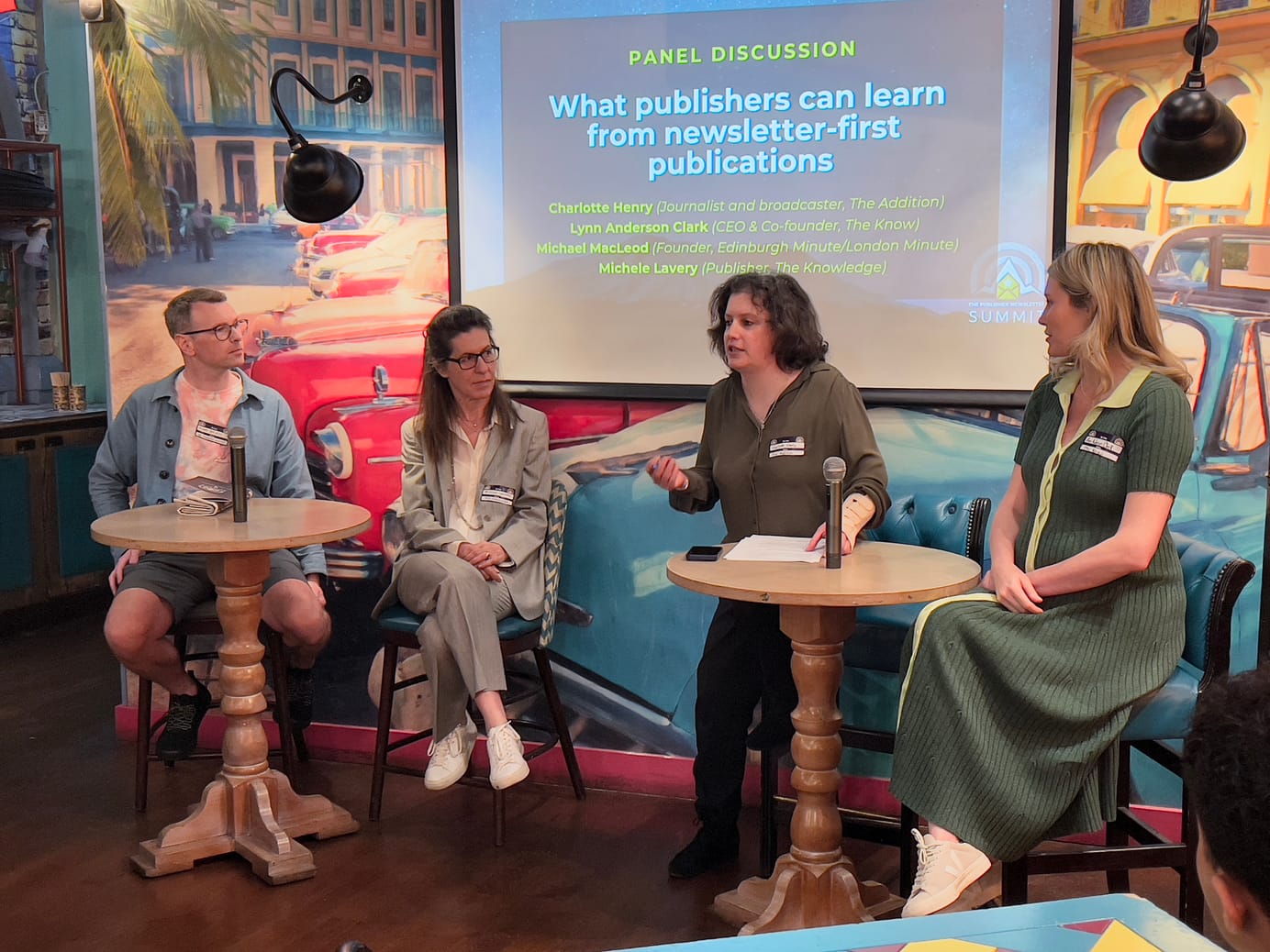
The future of live journalism
What does live coverage of news look like in the third decade of the 21st century? Is liveblogging past its prime?
A panel discussion at the Future of Media Technology Conference.
Panel
- Chair: Jim Edwards, Author, Say Thank You for Everything
- Nathalie Malinarich, New Formats Editor, BBC
- Eirik Naesje, CEO, Norkon
- Claire Phipps, Head of Digital (Live), The Guardian
- Nick Sutton, Head of Digital Output, Sky News
Is liveblogging still relevant?
The BBC isn’t seeing any decline in audience demand for live-blogging. Norkon is finding it a useful way of attracting new audiences – it came more than a decade ago, but it’s constantly evolving. The Guardian has been doing live blogs for 25 years, moving from a basic format which had to be republished with every update, to much more sophisticated. They do see peaks and troughs of traffic, for example with Ukraine liveblogs.

“If the best way to tell a story is a liveblog, no other way is going to do that well,” says Claire Phipps. She suggests that a liveblog requires the reader to do a lot less work than a traditional article.
And Nick Sutton agrees, too. They all find live-blogging still to be a really valuable format. It’s not just for breaking news stories, but also for ongoing situations. Even now, 18 months on, the Ukraine liveblog is often one of the most read stories on the website – and is attracting search traffic, too.
Verification is still critical – and the decline of Twitter/X is making that harder.
Building a community with liveblogs
Sky is trying to make liveblog more of a dialogue, using a comment module, to allow people to ask questions. They’re using AI to group those questions together, so they can focus their answers and coverage. There’s also general interest in using AI for summarising. But there’s still some scepticism about the reliability of generative AI.
How about AIs writing sports liveblogs?

“The wonderful thing about sports blogs is that they’re so human,” says Malinarich. “It might be a useful tool that helps you curate what goes into a live page, but I still think we’ll need writers.”
Going live on TikTok
The BBC is also exploring live-streaming around major events, including on TikTok. The cable car story was one of their most viewed as a livestream, for example. The Guardian has a dedicated reporter in Australia, doing TikTok explainers, and some of the most watched of her videos have been on more serious topics. It reminds Phipps of the way liveblogs moved from sport to hard news, despite newsroom scepticism.

Sky has seen big growth in TikTok followers. A real mix of content works from them, from breaking news to in-depth content. There is an appetite for serious news, not just lightweight content. But making money is still a challenge, as is getting people back to your own site.
Other snippets

- Discord can be a useful platform for creating direct contact with audience around podcasts.
- The changes to Twitter/X have hit people’s use of it as a news-gathering platform. People are actively looking around for a replacement.
- Finding the right Telegram channels to follow has been more critical around Russia and Ukraine.
Sign up for e-mail updates
Join the newsletter to receive the latest posts in your inbox.










